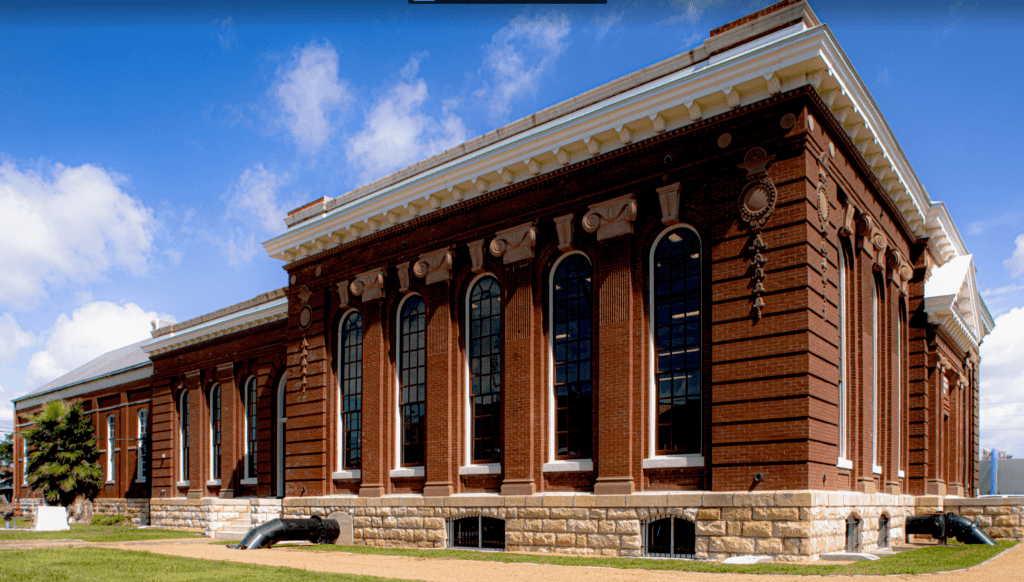Words and Photos: Dohn LaBiche, MASONRY Magazine
Editor’s Note: MASONRY Magazine got the opportunity to talk with Dohn LaBiche of The LaBiche Architectural Group Inc, about the development of the 30th Street Water & Electric Light Station. The 30th Street Water & Electric Station has been renovated and restored to a community space in Galveston, Texas. Thank you to Dohn for taking the time to sit down with us.
The Galveston Water and Electric Light Station was originally built in the 1800s but was destroyed by a hurricane in 1900. In the second iteration of the station, a fire broke out, and the work that was being completed was burned down. In the third construction process, the foundation of the original building was built upon, which was the white stone seen at the ground level. With that, the city hired an engineering firm that then hired The LaBiche Architectural Group to take on this new project of transforming an old water pump station into the building that it is today. The building went through various reconstruction efforts throughout this time but was not transformed into a community meeting facility until The LaBiche Architectural Group, with Dohn H. LaBiche, began the work of restoration.
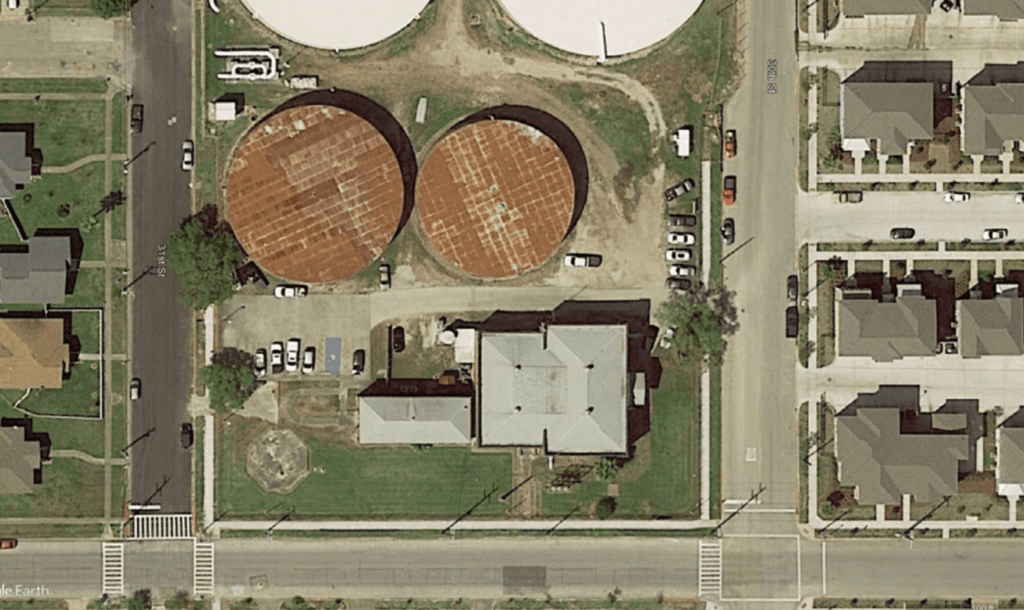
The main area of the building is a large open room and had pits built into the flooring above the original water pumps. As a community center, the building had to take on various roles, such as hosting large events and community meetings, making it difficult to maintain a floor with that depth. The team came in and took the old pumps out in order to fill those pits and create level flooring in the center of a multipurpose space. Behind the main area, there was originally a space that contained the electrical generator, a backup generator, and storage. The room was transformed into a small meeting room while the rest of the back of the area was built with new restrooms on the ground level. Next to the exterior wall, there was a two-story, narrow space for preparations of a caterer. The interior bathroom and patterns are from the 1930s in keeping with the historical value of the building. Some of the doors were replicated to match, giving the building “a new lease on life in a totally new purpose,” Dohn states.
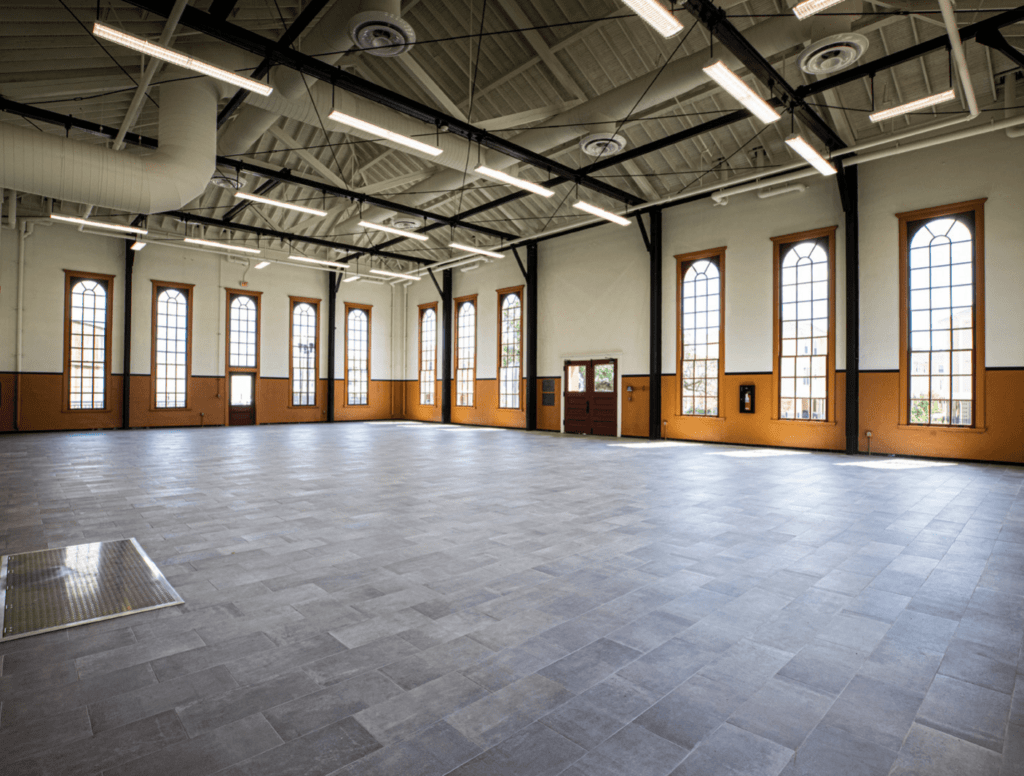
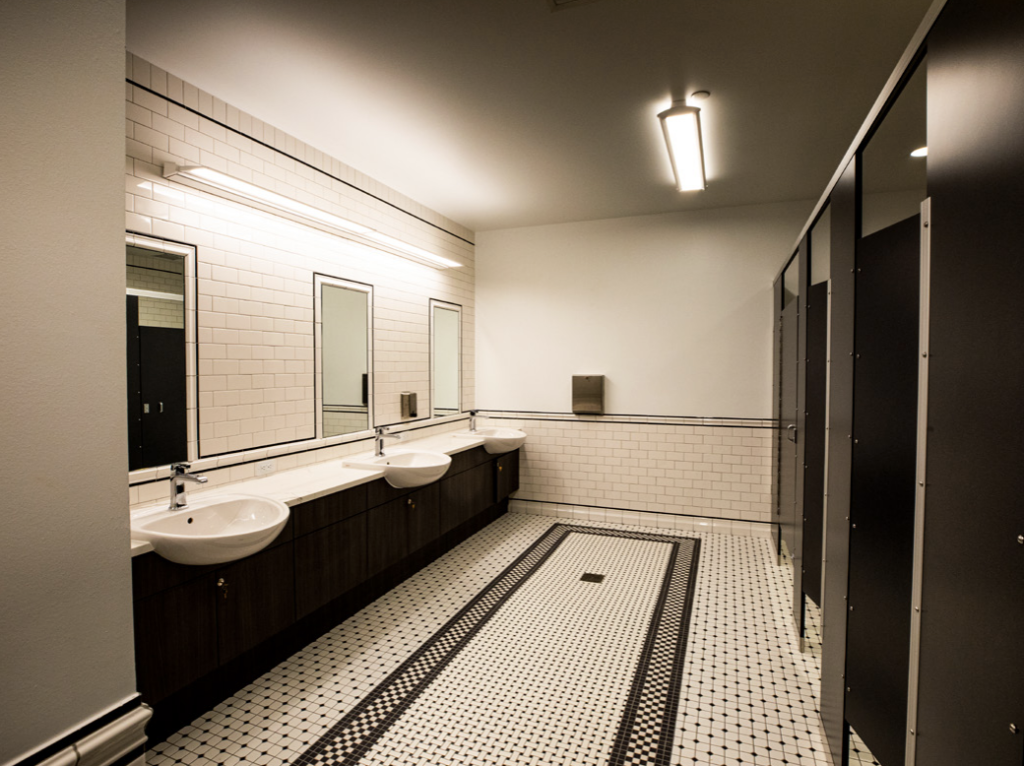
The Galveston Water and Electric Light Station is part of the Texas Historical Commission’s registered property, so it was imperative to restore the outside to its original condition and look. All of the existing masonry was tuckpointed after noticing the broken masonry around the front and sides of the building. On the rear side of the building, there was a section of brick that was taken out and used to repair the three sides that the public faces. The rear side of the building was re-established with new masonry. “It’s very obvious where that is in,” stated Dohn. The team bought some new brick that was close to the original color and patched the back side of the building. The patch is not visible as it is mostly covered by mechanical equipment.
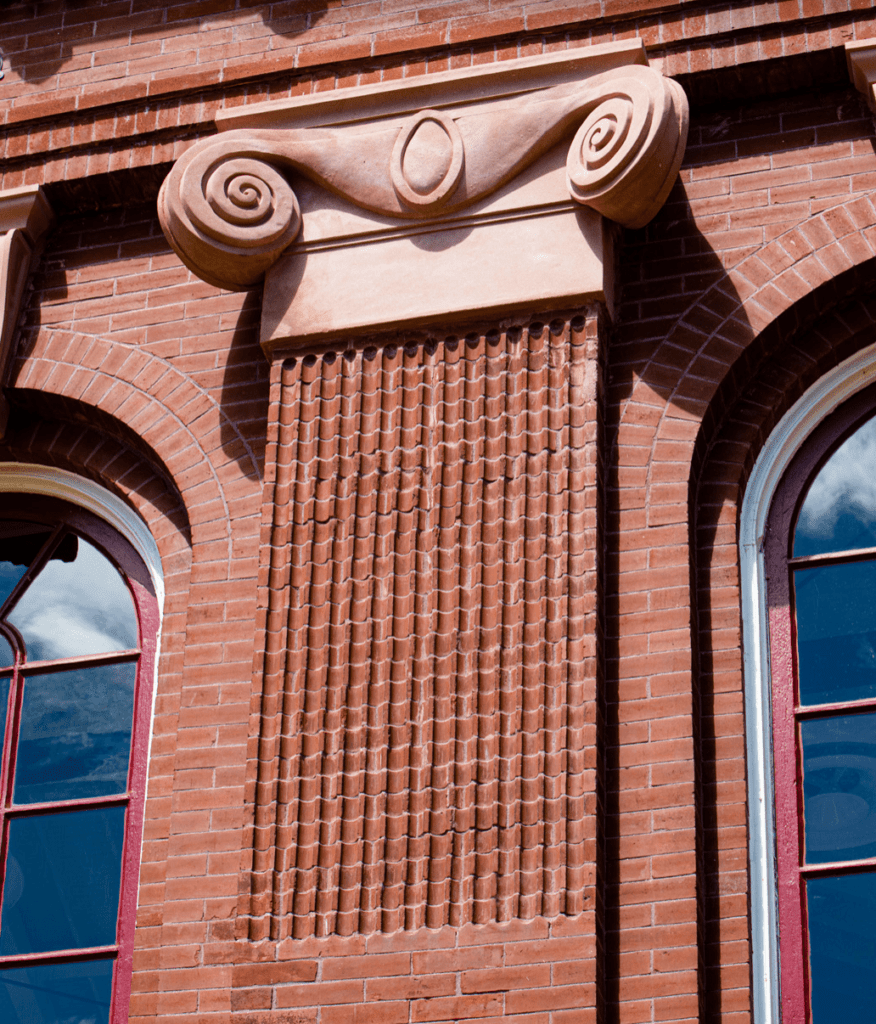
The cast stone column capitals, the keystones, and the other cast stone detailing was done on the exterior of the building. Unfortunately, most of the original cast stone detailing was gone leaving the team with little to no material repurposing. With the little stone that was left, the team made casts of those and created new cast stone column capitals to mimic the original historical view. The columns weigh about 350 pounds each and require stainless steel pins for the existing masonry backup. With the keystone, some of the arches were missing various bricks and, therefore, were redone. The pediment at the front of the building was gone and destroyed in the previous years. With historical pictures and the reference to other Texas restoration work, the team recreated the look, starting with fiberglass at the upper portion of the building. The team traveled to the previous place of Texas restoration and historical architecture, and they cast that particular component of their building out of fiberglass, ensuring its durability. Along with the pediment, the crown of the building that runs all the way around it was originally sheet metal. Dohn had talked about the salt climate in Galveston affecting the sheet metal, keeping it from being able to last a long time, and having the lack of resilience that it needed for the environment.
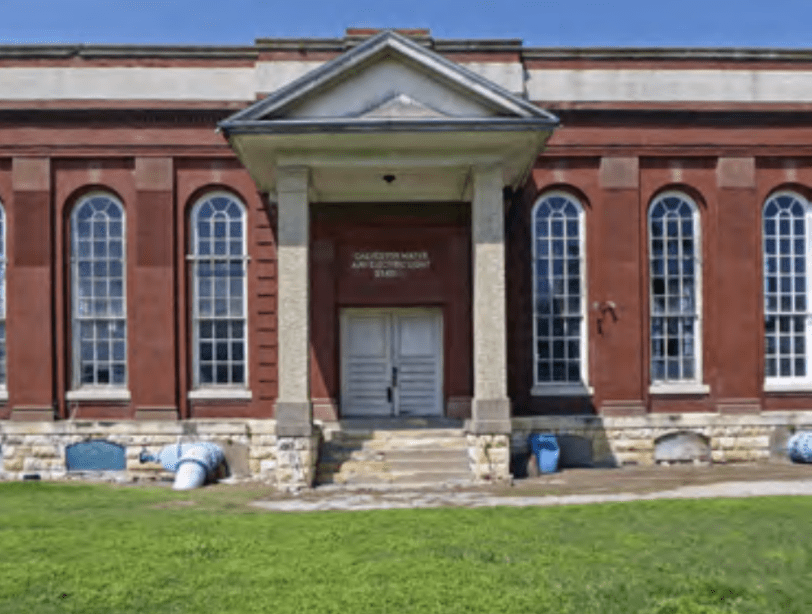
The steps and base of the building were redone with the original limestone used in the building’s history. These were all tuckpointed to the original profile, but the masonry joint that is in the stone has “a bubble out profile or a pencil profile,” as Dohn mentioned. That was all completed and restored back to the original look and feel of the historical Galveston building. Around the building, the architects noticed that the storing of chlorine around the masonry attacked the mortar leaving the mortar damaged. The mortar had turned into a dusty material, and Dohn emphasized that he could “… take it and scrape the mortar out of between the bricks with [his] finger.”
The basement windows were completely gone except for one of them, so the team was able to capture the profiles of that frame and compare them to historical photos. With this, the windows had to be replicated and made from scratch. The team did a paint survey of the building to determine the original colors of the interior and exterior.
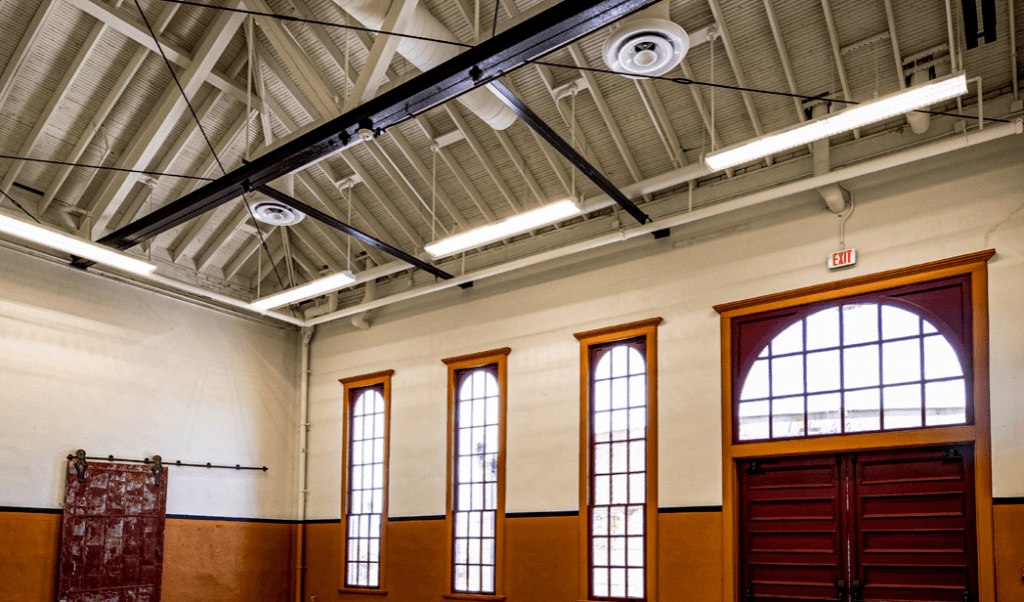
To complete the look, the team restored the “rock drive” and walkways that were surrounding the building so that the building would be easily accessible and aesthetically pleasing to the public. With six awards in restoration and architecture, the city of Galveston appreciated it and even won the historic preservation for commercial buildings. At The LaBiche Architectural Group, Dohn and his team are very thankful for these awards but continue to emphasize the reason behind taking on these projects is not for the reason that there are awards but to make a difference in the Galveston community.
The Team:
Architect: The LaBiche Architectural Group, Inc.
Brick Manufacturer: Acme Brick Company
Mason Contractor: Marsh Waterproofing, Inc
Structural Engineer: AWC – Arceneaux, Wilson & Cole
Mechanical & Electrical Engineer: Lechtenberg Consulting
General Contractor: Ardent Construction, LLC
Historic Preservation Consultant: Source Historical Services
Roofing & Building Envelope Consultant: Hollon-Cannon Group
